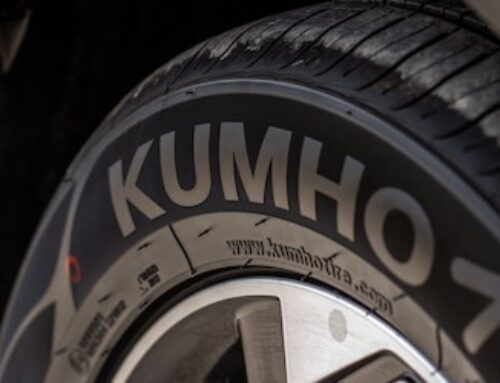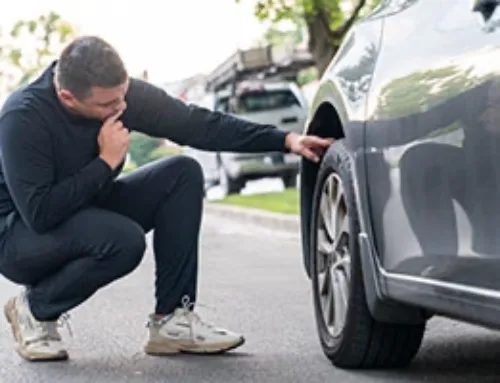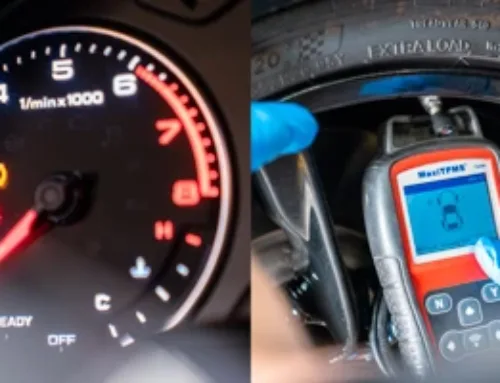Table of Contents
Are you considering buying new tires but aren’t sure if you need them? It can be difficult to know when to replace your tires, but there are plenty of signs to look out for which will let you know when your worn tires are nearing the end of their life. Keep reading to discover what you need to check to know if you need new tires or not.

Warning signs you need new tires
There are several different warning signs to look out for, such as uneven tread wear, overall tread depth, and the age of your tires. We often don’t give much thought to our tires and will walk right by without even looking at them. But sometimes, all it takes is one good look at your tires to notice things like uneven wear or the condition of your tire’s tread.
Normal tire tread wear
Before we start, it’s important to note that tires wear down naturally over an extended period. From constant contact with the road, the rubber is gradually worn away, and eventually, a once-new tire will not have much tread left. Normal wear means that the tire wear is even all the way around the tire with no spots that stand out as worse than others.
Even if your tires wear evenly, you will likely need to think about replacing your tires every 60,000 miles. This is depending on your driving style, weather conditions, road conditions, tread pattern, tire type, and several other factors.
Uneven tire tread wear

Uneven tire wear is usually indicative of some kind of problem with your vehicle, such as a problem with wheel alignment, suspension, etc. Uneven wear is when one specific part of the tire tread is more worn down than the rest of the tread pattern. This kind of tire wear can happen on almost any part of the tire, such as the inside of the tread, the outside, the center, the edges, and even the sidewall can become worn from bumping into curbs while parking. If one part of your tire wears out, it doesn’t matter that the rest of the tire is in pristine condition. It only takes one worn-out section of the tire to fail for the whole tire to fail. So if you notice uneven tread wear starting to form, it’s best to take it to a technician as soon as possible.
Determine manufacture date
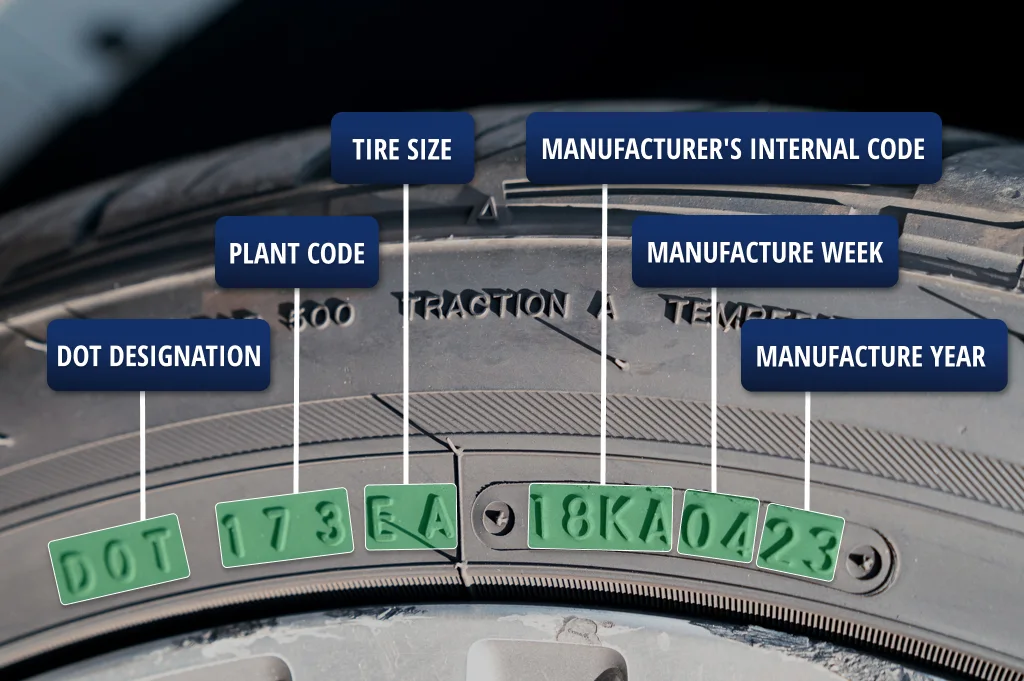
Most tire manufacturers will include a manufacture date on each tire’s edge. On the sidewall of the tire, next to the manufacturer identity number, you can find the manufacturing date. This is written with four numbers: the first two numbers show the week, and the last two numbers show the year. For example, a tire manufacture date written as 3518 means the tire was made in the 35th week of 2018. Tire manufacturers recommend replacing any tires after ten years, regardless of their condition. It is also recommended to have your tires inspected at six years. Rubber degrades slowly over time, and even tires that have never been driven a single mile will not stay good forever.
Use a tire tread depth gauge
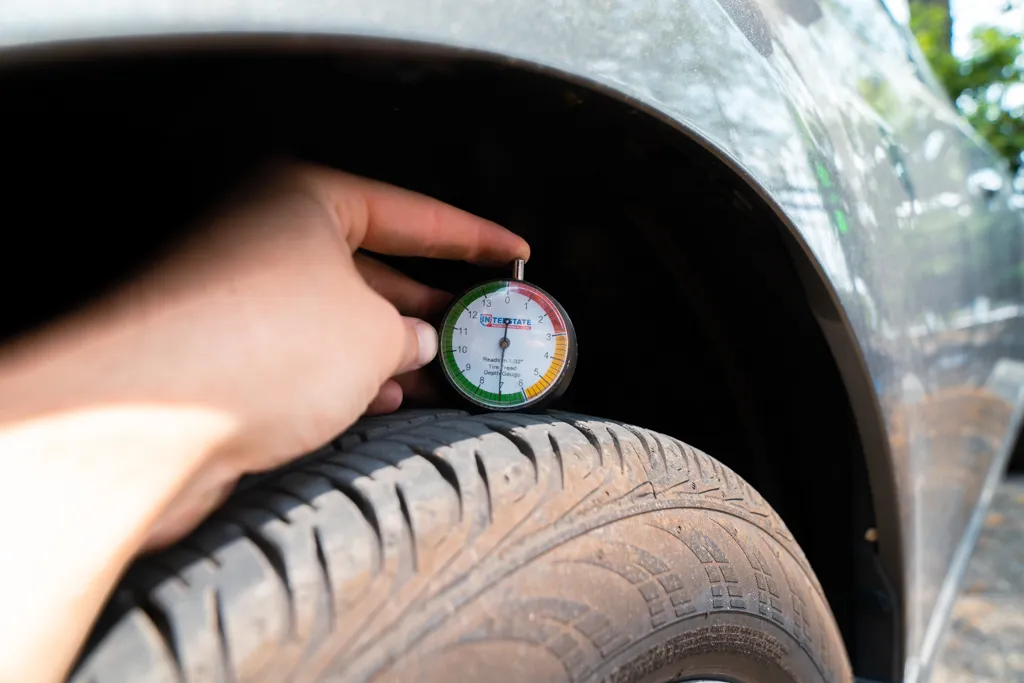
A tire tread depth gauge is a simple tool you can use to measure the tread depth and, therefore, the amount of tread wear your tires have experienced. Most gauges measure up to 1/32nd of an inch or 1 millimeter in depth. The gauge is made in both a mechanical model and an electronic model, but the use is pretty much the same across all models. Most tread depth gauges can be purchased for about $10-20.
Follow these instructions to use one:
- Insert the small metal rod, known as the probe, into the bottom of one of the grooves in your tread
- With the probe touching the bottom of the tread groove, carefully push down the body of the tread depth gauge until the shoulders press up against the top part of the tread
- Remove the gauge from the tire, being careful not to hit the probe against the side of the tread wall
- Read the measurement, either electronically or on the measurement piece that will stick out of the back of the gauge
- Repeat this process several times around your tire, especially if you see an area that looks more worn or different from the rest of the tread
- Compare your results from around your tire tread
The penny test
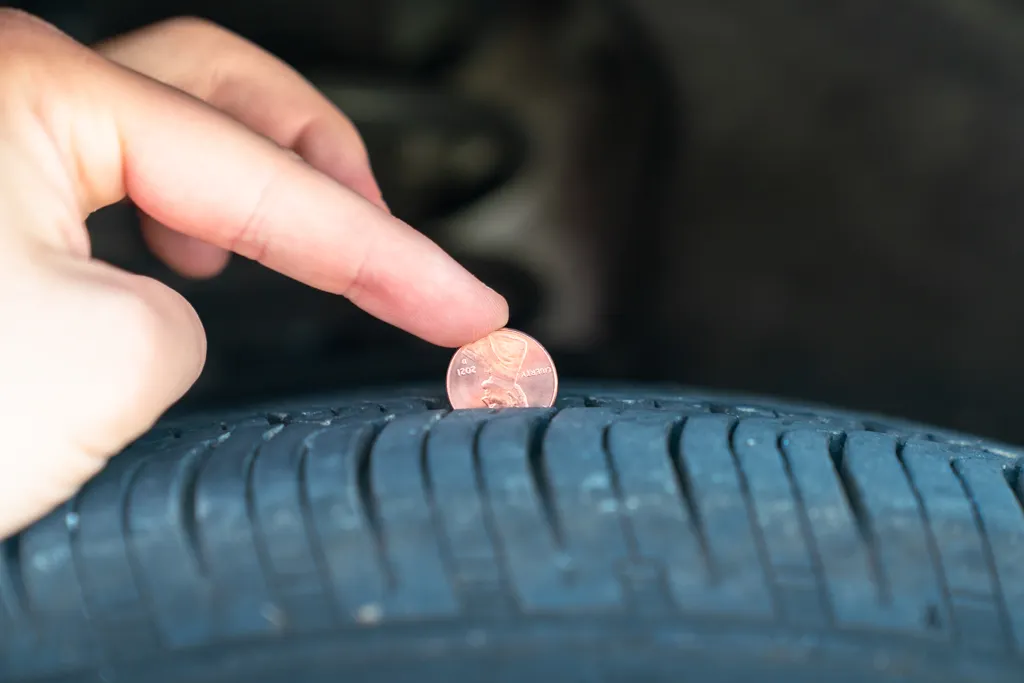
If you don’t have access to a tire tread depth gauge, you can get a fairly accurate reading using a standard penny. To do the penny test, you only need a penny and possibly a marker.
- Start by pointing the top of Lincoln’s head down and insert the penny into one of the grooves
- If Lincoln’s head entirely disappears below the tread, this means that you have at least 2/32nds of an inch of tread left, which means your tire is in good shape
- If you can see all of Lincoln’s handsome face and forehead, this means that your tread depth is down to about 1/32nd of an inch and a clear sign you need to replace your tires soon
- If you do the penny test and the tread comes up to around Lincoln’s nose or somewhere in between neck and forehead, then you have some time left
- Don’t forget to measure at several different spots around your tire. You can use a thin marker to make a mark on the penny where the tread comes up for easy comparison
Use the tread wear indicators

The tread wear indicators are bars within the grooves of your tire’s tread that are raised slightly above the rest of the groove. The tread wear indicators (T.W.I) are raised to 2/32nds of an inch, to be precise. Locate where they are on your tire. If the tread is even with the tread wear indicators, then your tread depth is down to 2/32nds of an inch or lower. You should think about replacing your tires soon!
Winter tires vs. all-season tires
It’s important to note that 2/32nds of an inch is the limit for all-season tires. Winter tires require a good deal more tread depth to function properly. Tread wear bars in winter tires will usually come up to 5/32nds, or about twice the depth of the bars in most all-season tires.
Other possible issues
There are other issues besides tire wear which will tell if you need new tires. After all, a tire has many parts and components other than the tire tread.
Cracked rubber

Over time, the rubber will degrade due to simple exposure to extreme temperature swings (especially high heat), sunlight, and even chemicals on the road surface. Cracked rubber can happen even if you haven’t driven that much and usually becomes worse the older your tires get. Each crack is a point of possible failure for the tire, making them more susceptible to blowouts. If your tires are cracked, it’s time to get new tires.
Odd vibrations or noise

If you feel your car or steering wheel vibrating while you’re driving, this can be a sign that your tires are experiencing more than normal friction with the roadway. This is usually indicative that your wheels are out of alignment, and you should bring it to a technician as soon as possible.
Sidewall bulges
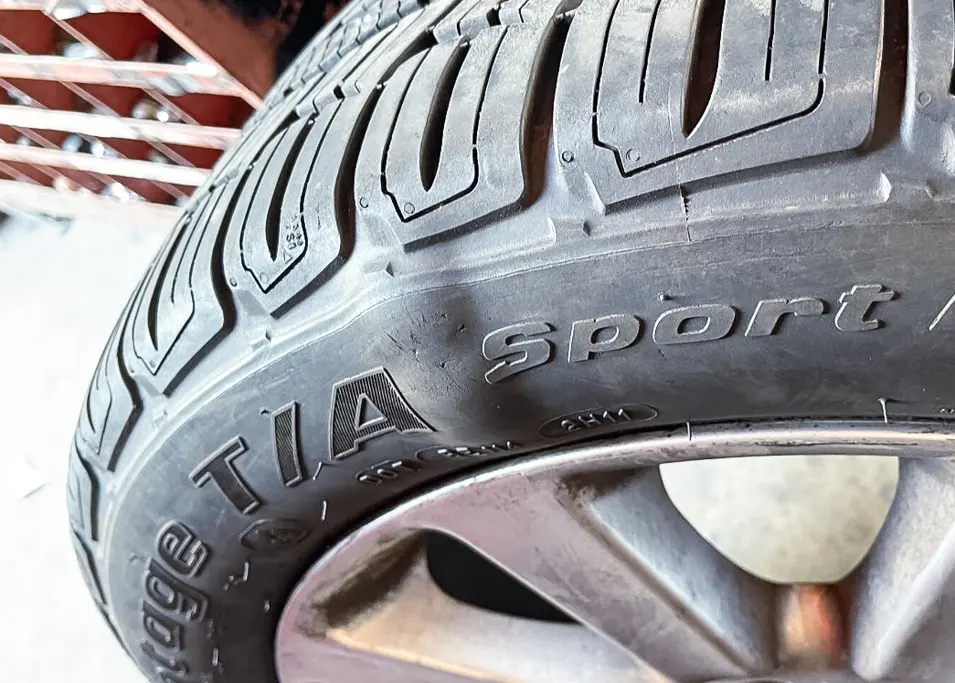
A sidewall bulge is when air escapes through a small hole in the inner liner and builds up in the carcass or body of the tire. It will appear like a small ball or egg has been shoved under the skin of your tire sidewall, so it is fairly easy to spot.
Sidewall bulges are usually the result of impact damage, such as hitting a pothole. It is not safe to drive on a tire with a bulge, and they should be replaced as soon as possible. Definitely do NOT try to pop or lance the bulge, as this could cause the tire to explode.
How to take care of your tires
To make sure your tires carry on for as long as possible, it’s best to take care of them. There are a number of things you can do to really extend the life of your tires.
Wheel alignment
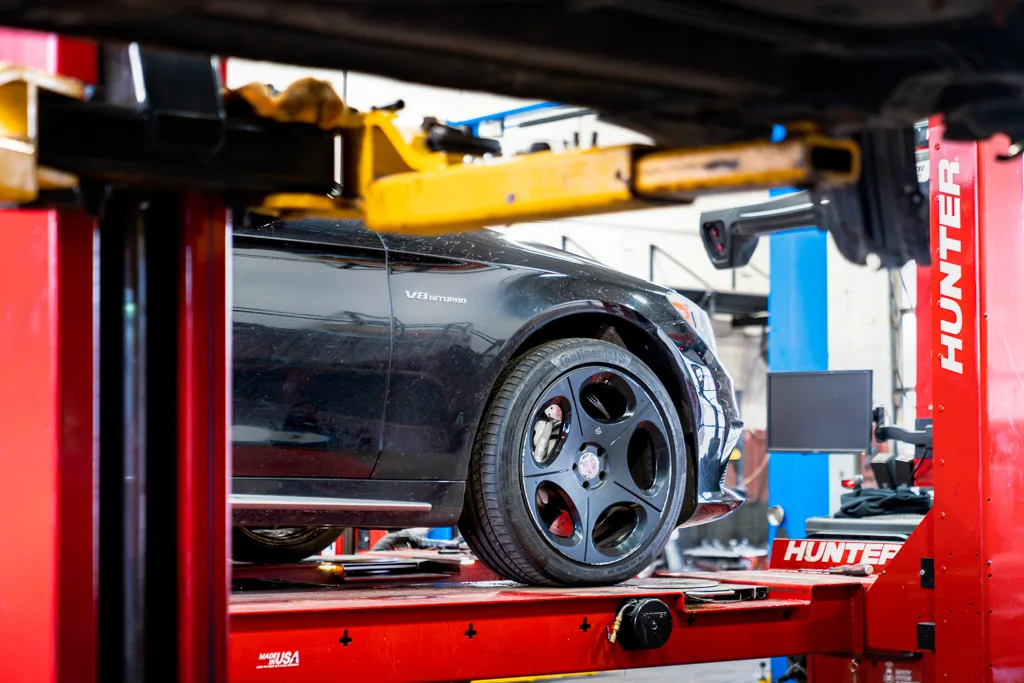
A wheel alignment makes sure that your wheels are straight and flat, making optimal contact with the road and reducing tire wear. It’s advisable to get a wheel alignment every 6,000 miles, or at least once a year. Getting your wheels aligned will usually cost about $100-150 and takes less than an hour.
Tire rotation
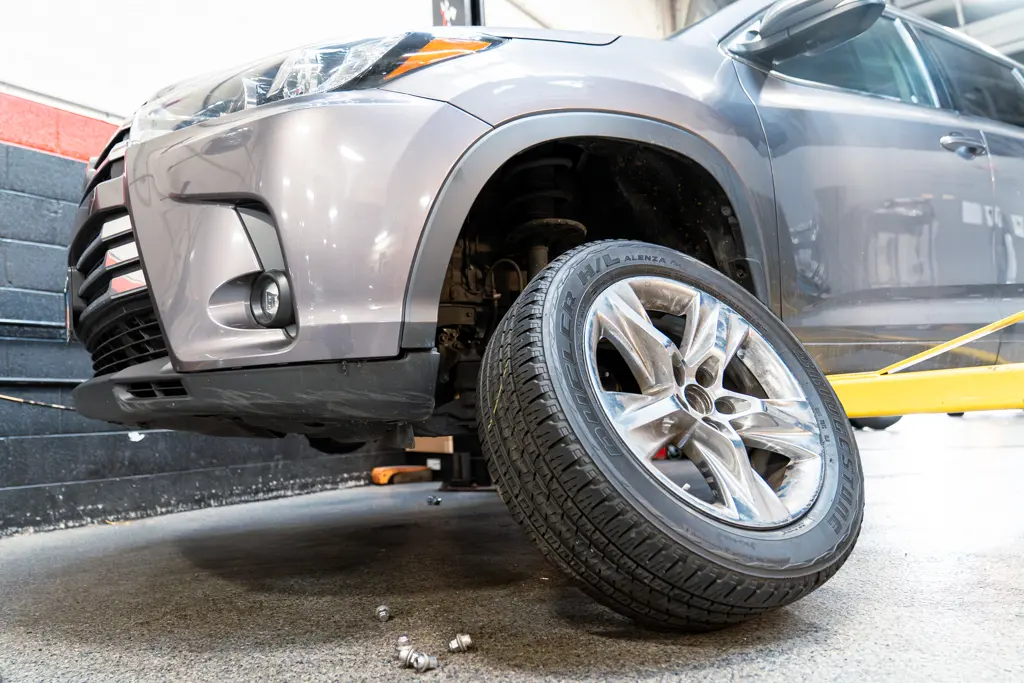
A tire rotation is simply swapping the positions of your tires. If there is a slight imbalance somewhere, then a few tire rotations will help spread this out to all four tires, ensuring they wear evenly. Technicians advise getting your tires rotated every 5,000 miles; the service only costs around $50.
Friendly reminder: Check tire pressure regularly
Maintaining the recommended tire pressure for your vehicle’s tires is a very cheap and easy way to keep them in good shape. Improperly inflated tires will develop issues over time, from uneven wear to damaged sidewalls. Use a tire pressure gauge about once a month or so to check your tire pressure. Adding more air to your tires is usually free or close to it at most gas stations.
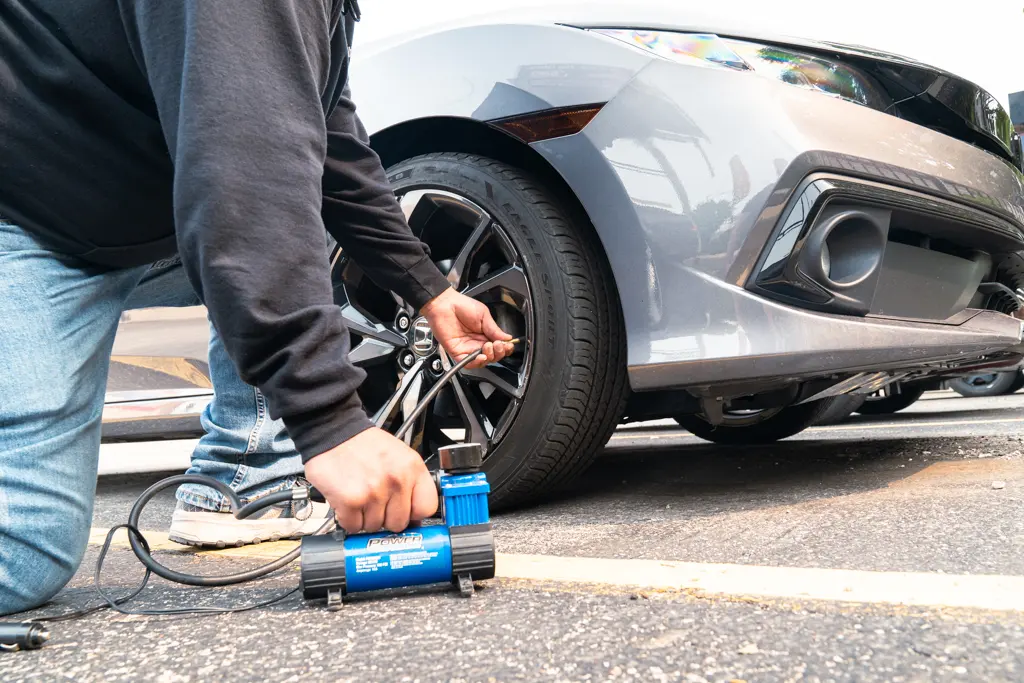
Tire pressure issues
Both over-inflated and under-inflated tires will result in uneven tire wear. Incorrect tire pressure can also affect handling performance due to the way the rubber makes contact with the road.
Frequently Asked Questions
Is it illegal to drive on ten-year-old tires?
In the United States, no laws require a car owner to get new tires based on their age, but tire manufacturers highly recommend replacing your tires after 6 years. Any tires older than 10 years pose a serious safety hazard.
How do I know what the recommended tire pressure is for my tires?
Most people assume you can look on the sidewall of your tire to find the recommended tire pressure, but actually, recommended tire pressure depends on other factors, such as the weight of the vehicle you driving. You can find your vehicle’s recommended tire pressure in the car owner’s manual or on the inside of the driver’s side door jamb.
Is it bad to use winter tires during the summer?
The short answer to this is yes, it’s bad for the life of your tires, but no, it’s not particularly dangerous. Driving with winter tires when the weather is warm and there is no snow or ice present will wear down those expensive winter tires more quickly.


